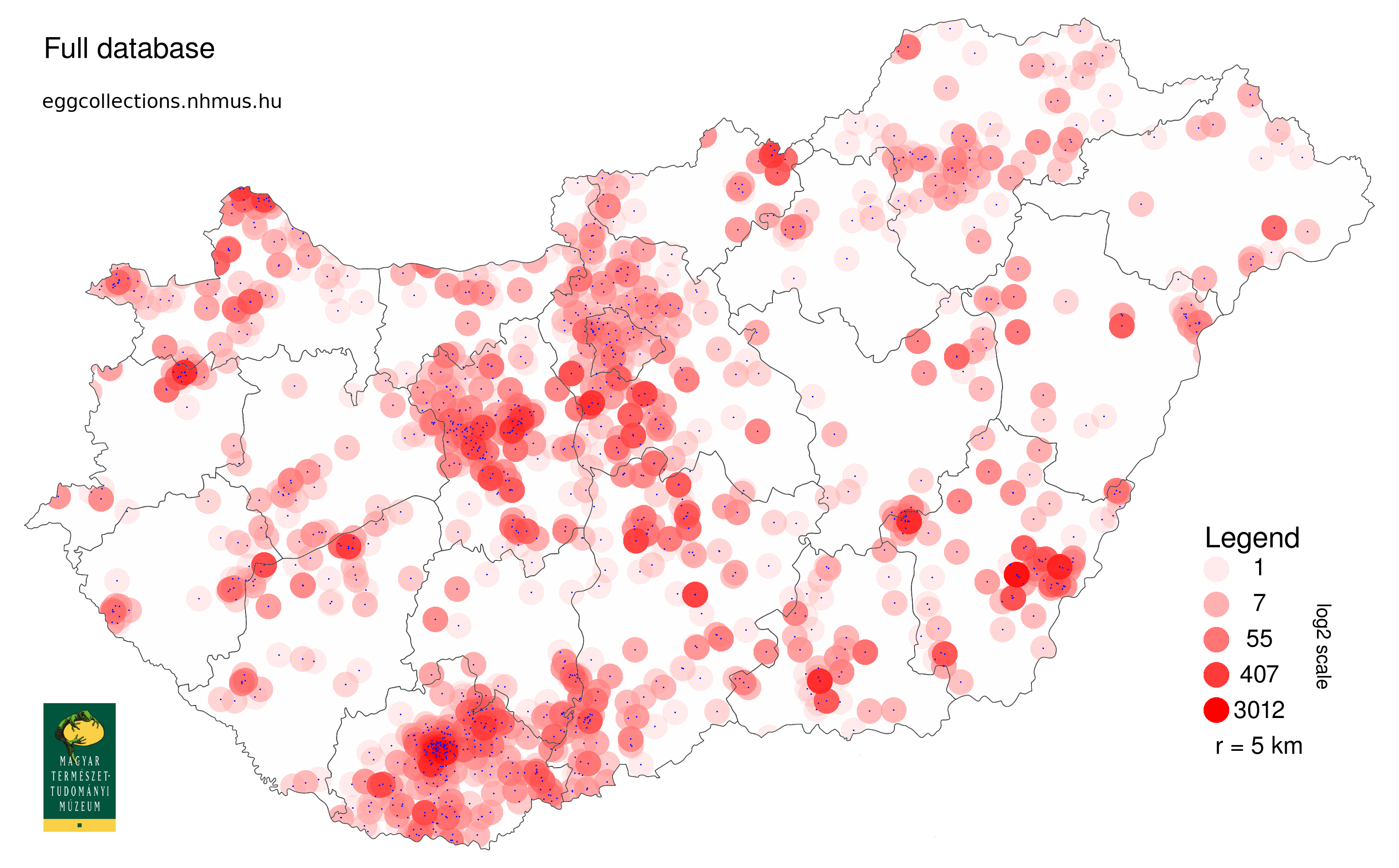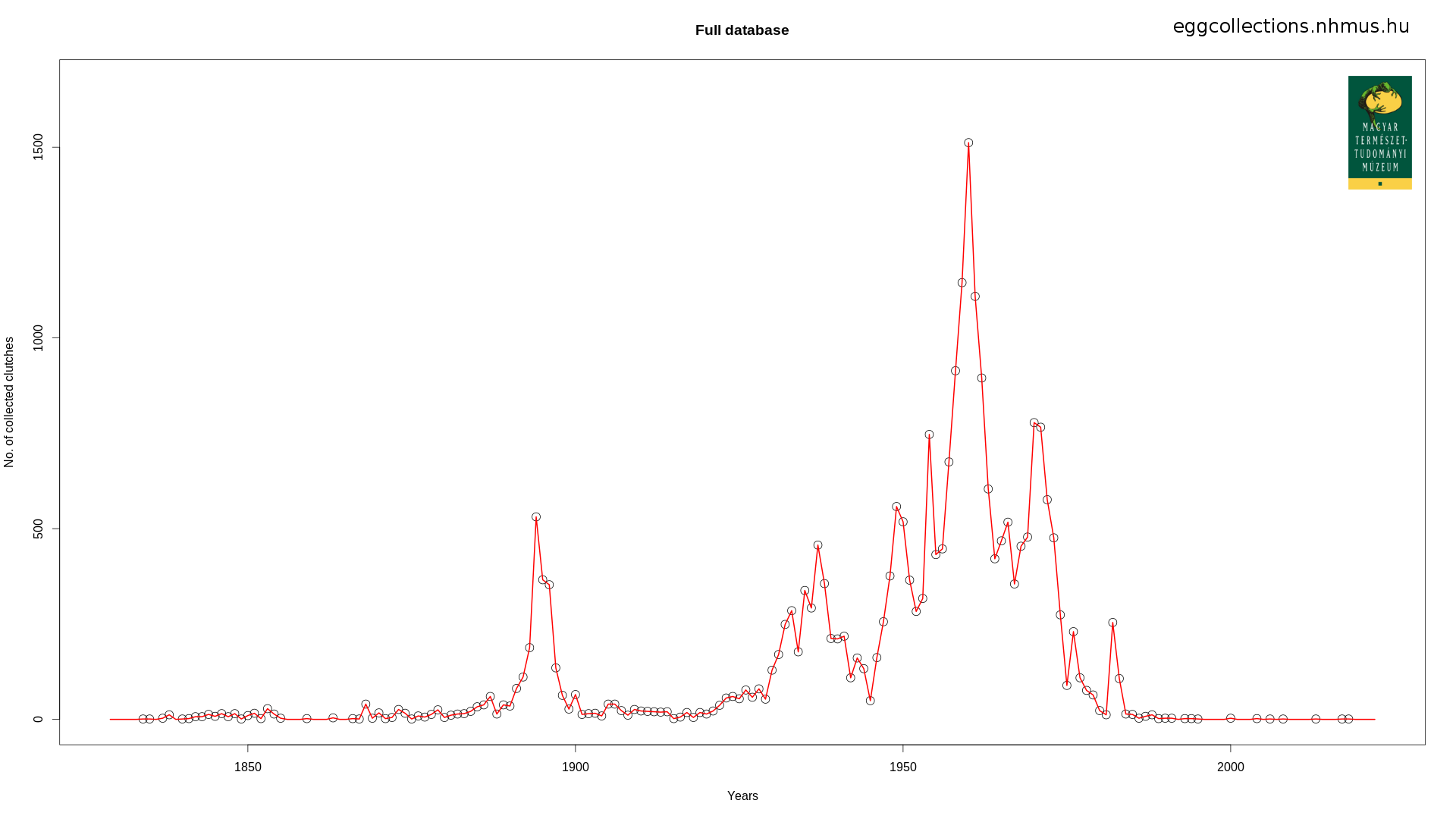| Kezdőlap | Az adatbázisról | Fajok Species |
Egyebek Miscellaneous |
nhmus.hu |
| Home | About the database |
About the collections
Rendek és családok
Orders and Families
- Struthioniformes
- Casuariiformes
- Anseriformes
- Galliformes
- Phoenicopteriformes
- Podicipediformes
- Columbiformes
- Pterocliformes
- Otidiformes
- Cuculiformes
- Caprimulgiformes
- Gruiformes
- Charadriiformes
- Procellariiformes
- Ciconiiformes
- Suliformes
- Pelecaniformes
- Accipitriformes
- Strigiformes
- Bucerotiformes
- Coraciiformes
- Piciformes
- Falconiformes
- Psittaciformes
- Passeriformes
- Pittidae
- Rhinocryptidae
- Laniidae
- Oriolidae
- Corvidae
- Panuridae
- Alaudidae
- Hirundinidae
- Paridae
- Remizidae
- Aegithalidae
- Sittidae
- Tichodromidae
- Certhiidae
- Troglodytidae
- Cinclidae
- Pycnonotidae
- Regulidae
- Phylloscopidae
- Acrocephalidae
- Locustellidae
- Cisticolidae
- Sylviidae
- Leiothrichidae
- Muscicapidae
- Turdidae
- Sturnidae
- Nectariniidae
- Prunellidae
- Motacillidae
- Fringillidae
- Emberizidae
- Passerellidae
- Icteridae
- Cardinalidae
- Passeridae
Ez az oldal magyarul is elérhető.
This database elaborates the collecting data of Hungarian egg collections. At present the database contains 23,945 clutches of 333 bird species. GPS coordinates were assigned to each collecting localities, and hence the clutches could be shown on maps. At the moment GPS coordinates are assigned to 94.47 % of clutches.
Help us to make the database more complete!
Please let us know if you can specify the collecting locations on the maps, or if you know the GPS coordinates of a location which doesn't have coordinates yet. The list of the places whithot GPS coordinates is available here.
Collecting locations in the world
The majority of clutches in the database were collected within the Carpathian Basin. As Hungary never possessed colonies, and only a handful of zoological collecting trips were organised by the Hungarian State to faraway countries and continents, only a few exchanged or purchased exotic clutches enrich Hungarian collections. Although Hungarian collectors intensely exchanged clutches among each-other, the geographic representation was not much elevated by these activities.
All the collecting areas in the full database is presented in the Google Map below.
Collecting abundance in Hungary
The spatial pattern of collected clutches mirrors foremost the activity of collectors, and not the geographic range of the given bird species. The majority of collectors focused on small study areas – especially in the 19th century and at the beginning of the 20th century, when collecting activities were mainly carried out on foot in the neighbourhood of a collector's city or village. Only the large collections containing high proportion of exchanged clutches show wider geographic representation. The most intensely researched and collected locations were either near cities, and/or offered the opportunity of collecting highly prized bird species. In Hungary, the most frequented areas were the middle mountain ranges, the area south-east of the capitol Budapest, the Mecsek, Velencei and Bükk Mountains, the area of Körös rivers near Békéscsaba and around Lake Fertő. The water regulations of the Tisza and Danube rivers resulted in large sections of sparsely vegetated riverbanks, and the adjacent agricultural areas sustained a less diverse avifauna, and hence the habitats of the Great Hungarian Plain were less intensely collected.
The figure below shows the collecting abundance in Hungary. On the map the collecting locations are marked with blue dots, while the red tones denote how many clutches have been collected within a 5 km radius. The red tones mark the collecting abundance on a logarithmic scale.

Collecting abundance by year
Collecting activity shows two separate peaks: parallel with the development of field ornithology more and more attention was concentrated on the collection of clutches from the middle of the 19th century untill the beginning of the 20th century. After the great devastation of the two wars in the 20th century, a pronounced effort was made to replace the lost collections from the 1950's to the 1970's. Nowadays only eggs coming from deserted clutches enrich our museum collections.
The figure below shows the collecting abundance by year in the full database.

Most popular species
The most intensely collected bird species in Hungary is by far the Common cuckoo (Cuculus canorus) and its hosts: Great reed warbler (Acrocephalus arundinaceus), Red-backed shrike (Lanius collurio) and European robin (Erithacus rubecula). Some egg collectors specialised entirely on the cuckoo and its hosts only. These are followed by such common and easily collectible species such as the House sparrow (Passer domesticus), the Common blackbird (Turdus merula), or the colonially breeding Black-headed gull (Chroicocephalus ridibundus) and the Common tern (Sterna hirundo).
20 most often collected species:
| Species | No. of collected clutches |
|---|---|
| Cuculus canorus | 1495 |
| Lanius collurio | 1001 |
| Acrocephalus arundinaceus | 930 |
| Erithacus rubecula | 611 |
| Vanellus vanellus | 402 |
| Sylvia atricapilla | 389 |
| Passer domesticus | 378 |
| Turdus merula | 375 |
| Chloris chloris | 361 |
| Passer montanus | 346 |
| Chroicocephalus ridibundus | 341 |
| Turdus philomelos | 325 |
| Sterna hirundo | 321 |
| Pica pica | 318 |
| Fringilla coelebs | 312 |
| Chlidonias niger | 298 |
| Emberiza citrinella | 296 |
| Falco tinnunculus | 294 |
| Buteo buteo | 283 |
| Lanius minor | 265 |
Latest update of the database: 26 March 2020
Recommended citation
Pereszlényi Á., Haraszthy L., Solti B., Fuisz T. I. (2019) Magyarország tojásgyűjteményei. (Egg collections of Hungary.) http://eggcollections.nhmus.hu (doi: ???).